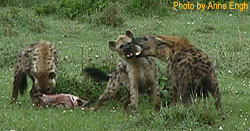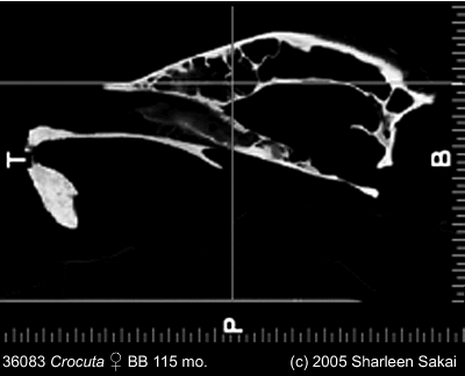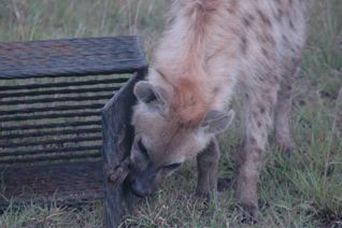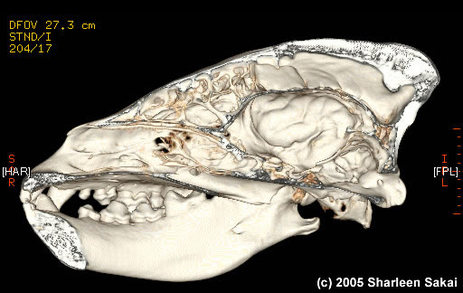
Cognition
By exploiting the striking parallels between the social lives of hyenas and primates, we have been testing an hypothesis (reviewed in Byrne & Whiten 1988) suggesting that great intelligence and large brains in primates have been favored by life in complex social worlds. If this hypothesis is correct, then spotted hyenas should exhibit some of the same cognitive abilities as do cercopithecine primates, since both taxa live in social groups of similar size and complexity. We have produced several papers showing that spotted hyenas do indeed exhibit primate- like abilities in the domain of social cognition (Holekamp et al 1999a, 2000; Wahaj et al 2001;Wahaj & Holekamp 2003; Engh & Holekamp 2003; Holekamp & Engh 2002; Engh et al 1999, in review). One of the key features claimed by primatologists (eg., Tomasello & Call 1997) to distinguish primates from other mammals is the ability to recognize third party relationships among conspecifics (those in which the animal in question is not directly involved). We have therefore dedicated a great deal of effort to determining whether our study animals can recognize third party relationships. Our initial results (Holekamp et al. 1999) suggested hyenas lack this ability in some contexts in which primates are known to recognize third party relationships. However, in the context of joining with conspecifics to form coalitions, hyenas can clearly recognize third party relationships (Engh et al. 2004). This finding offers strong support for the idea that cognitive abilities have been shaped convergently in primates and hyenas by demands of life in complex societies. Current work, spearheaded by PhD student Lily Johnson-Ulrich, focuses on general intelligence in spotted hyenas, and inquires whether the evolutionarily novel conditions associated with urbanization select for enhanced general intelligence.
We collaborated with neuroanatomist Sharleen Sakai, who uses analysis of CT-scanned images to compare brains of spotted hyenas with those of other carnivores that live in more or less complex societies than those of spotted hyenas (see figures below). Papers resulting from this collaboration include Sakai et al (2011), Arsznov et al. 2010) and Swanson et al. 2012). 
This is a CT image of a midsagittal section through an adult female spotted hyena skull. The space below the skull roof is the enlarged frontal sinus characteristic of this species. This sinus is hypothesized to play an important role in the bone crushing capabilities of this species. This specimen was scanned at the MRI facility, Department of Radiology, Michigan State University by C. Hammond.
|

